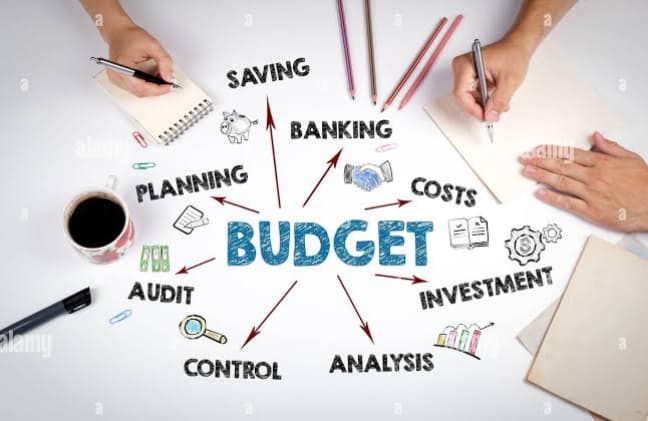Budgeting. We all know we should do it. But most of us either:
✅ Try a budget for a few weeks, then abandon it.
✅ Feel guilty for overspending and give up altogether.
✅ Or, worse — never start at all because it feels restrictive and overwhelming.
If that’s you, you’re not alone. In fact, most budgets fail. But not because you’re lazy or bad with money. It’s because traditional budgeting doesn’t match how humans actually think, feel, and live.
This blog will break down:
- Why typical budgets fail
- The psychology behind “budget burnout”
- And how to create a personalized system that you’ll actually want to follow
📉 The Problem with Traditional Budgets
Let’s be real: most budgeting advice sounds like punishment.
“Cut all the fun stuff.”
“Track every penny.”
“Don’t spend on lattes or anything you actually like.”
No wonder it feels like dieting for your wallet. Just like crash diets fail, so do rigid budgets.
🔍 Why Your Budget Keeps Failing
Here’s what I’ve seen in real life — and in financial coaching:
1️⃣ Budgets Ignore Human Psychology
- Humans crave autonomy. Being told “no” to everything triggers rebellion.
- Restriction creates burnout.
- If your budget doesn’t include joy or breathing room, it’s destined to break.
2️⃣ It’s Too Complicated
- Tracking every transaction can feel exhausting and tedious.
- The more complex your budget, the faster you’ll abandon it.
3️⃣ It’s Not Personalized
- A one-size-fits-all spreadsheet from a finance blog might not fit your life or your goals.
- Your priorities aren’t your neighbor’s priorities — your budget should reflect that.
🧠 The Psychology of Budget Burnout
Let’s dig a little deeper:
A 2022 survey by YNAB found that 70% of people abandon their budget within 3 months.
Why? Because budgeting triggers:
- Shame (“I’m not disciplined enough.”)
- Fear (“What if I mess up and ruin my future?”)
- Rebellion (“If I can’t spend on fun stuff, what’s the point?”)
Case Study:
Aarti, a 29-year-old working professional, tried following a strict 50/30/20 budget. She stuck to it for two months, but felt so deprived she ended up overspending on a vacation she “deserved.” Her mistake wasn’t lack of willpower — it was using a budget that didn’t reflect her real life and values.
💡 How to Create a Budget That Actually Works (and Feels Good)
Instead of following generic rules, build a budget that’s flexible, human-centered, and realistic.
Here’s how:
🪴 1. Start with Your Values, Not the Numbers
Most budgets start with “how much do you earn?” But flip it around:
- What matters most to you?
- What spending makes you feel alive and aligned?
- What does financial security actually look like for you?
Example:
- Deep security: A 6-month emergency fund
- Joy spending: Books, travel, or great coffee
- Giving back: Charity, supporting family
🪙 2. Build a “Money Map,” Not a Spreadsheet
Instead of tracking every rupee, create broad categories that reflect your life:
- 🎯 Essentials (rent, groceries, bills)
- 💸 Freedom fund (fun, hobbies, entertainment)
- 🛡️ Safety net (savings, insurance, debt repayment)
- 🌱 Future you (investments, career development, dreams)
This “money map” approach is easier to stick to and more meaningful than dozens of line items.
🔄 3. Use the 70/30 Rule for Flexibility
Forget rigid categories. A simpler framework:
- 70% of your income → Fixed and variable living costs
- 30% → Flexible categories (savings, fun, unexpected expenses)
This balances structure with freedom.
📆 4. Make It Dynamic — Adjust Monthly
A budget should be alive, not static.
Your expenses change month to month (festivals, family events, car repairs). Build in flexibility:
- Monthly “money check-ins” (15 min, max)
- Adjust categories if life shifts — no guilt!
Case Example:
Soham, a freelancer, noticed that one month he spent more on travel and another on courses. He adjusted his flexible fund to accommodate, rather than beating himself up for “messing up.”
🚫 5. Prioritize, Don’t Punish
Most budgeting fails because it feels like punishment. Flip it:
- Prioritize: Spend on what matters most to you
- Cut back: On things that don’t matter
Example:
- A ₹2000 subscription you never use? Cut it.
- A ₹5000 dinner with family you cherish? Keep it.
🧘 6. Automate the Boring Stuff
Reduce decision fatigue by automating:
- Fixed bills (rent, utilities)
- Recurring savings or investments
- Debt repayments
Automation means you’re not constantly “managing” money — it flows on its own.
📝 7. Track Progress, Not Perfection
You’re human. Some months you’ll overspend. Some you’ll save more.
Focus on:
- Trends over time (am I moving in the right direction?)
- Lessons from slip-ups (what triggered overspending?)
- Progress (am I getting better at prioritizing what matters?)
💬 Final Thoughts: Your Budget is Your Financial Mirror
A budget isn’t meant to trap you — it’s meant to free you.
It’s a mirror reflecting:
- What you value
- How you want to live
- And what brings you real peace of mind
So next time you feel guilty for “failing” at budgeting, remember:
You’re not failing — the system was failing you.
Start with:
1️⃣ Your values
2️⃣ A flexible plan
3️⃣ Compassion for yourself
Because the best budget is the one you’ll actually enjoy using.






